Ultimate Guide to Exercises for Lumbar Herniated Disc Relief 2
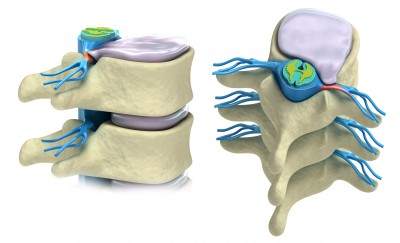
Did you find our previous article, “Disc Herniation Part 1,” helpful but are still battling discomfort? Are you eager to discover exercises that can effectively reposition your herniated disc and enhance your well-being? You’re in the right place.
In this comprehensive guide, we’ll cover:
- Effective Exercises for Repositioning a Herniated Disc: Learn the top movements to gently coax your disc back into alignment, reducing pain and improving mobility.
- Stabilization Techniques to Prevent Disc Displacement: Discover exercises that strengthen your core and back, ensuring your discs stay in place.
Understanding Lumbar Disc Herniation:
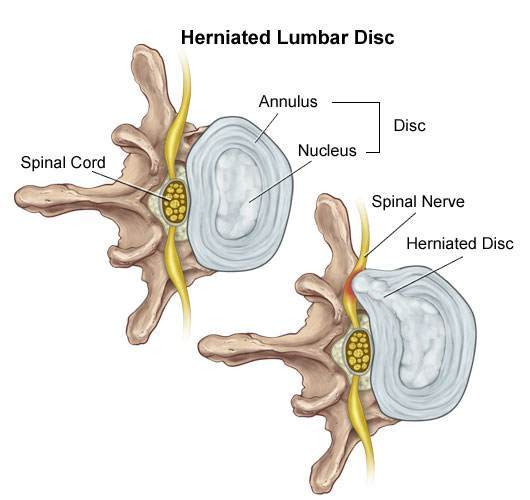
A herniated disc occurs when the disc’s nucleus breaks through the annulus, as shown in the illustration from neurosciences.beaumont.edu. But what triggers this displacement? The primary culprit is forward bending, which compresses the disc (think of it as a jelly-filled doughnut) and can lead to the annulus fracturing, allowing the nucleus to protrude and press against nerves.
Why Does it Hurt?
The disc’s exterior is tough cartilage, while its interior is softer, akin to mucus. Applying pressure on one side forces the inner material to the opposite side, similar to squeezing a doughnut. When a herniated disc or inflammation puts pressure on a nerve, pain ensues. The key to relief is applying counterpressure to reposition the disc.
For a deeper dive into herniated discs, refer to “Disc Herniation Part 1: Best Self-Treatments for Lumbar Disc Herniation.“
How to Apply Counterpressure:
The strategy involves bending your spine backwards or into the extension to shift the disc away from the nerve.
Exercises to Reposition a Herniated Disc: Note of Caution:
Initially, these exercises might intensify your pain slightly. If pain significantly worsens or radiates further down your leg during these exercises, cease immediately and consult a professional.
Exercises for Lumbar Herniated Disc
#1 Prone Lying Lumbar Herniated Disc
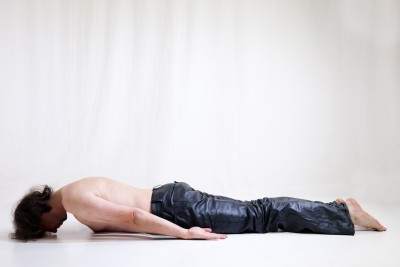
- Lie face down or prone in bed with your elbows tucked in under your side:
- As soon as you get up in the morning you should lie prone (face down). By getting in this position, your lower back becomes more arched, or as doctors say, you increase your lordosis.
- The increased lordosis pushes on the back of the disc helping to bring the nucleus forward into the correct position.
#2 Sphinx pose in Yoga For Lumbar Herniated Disc
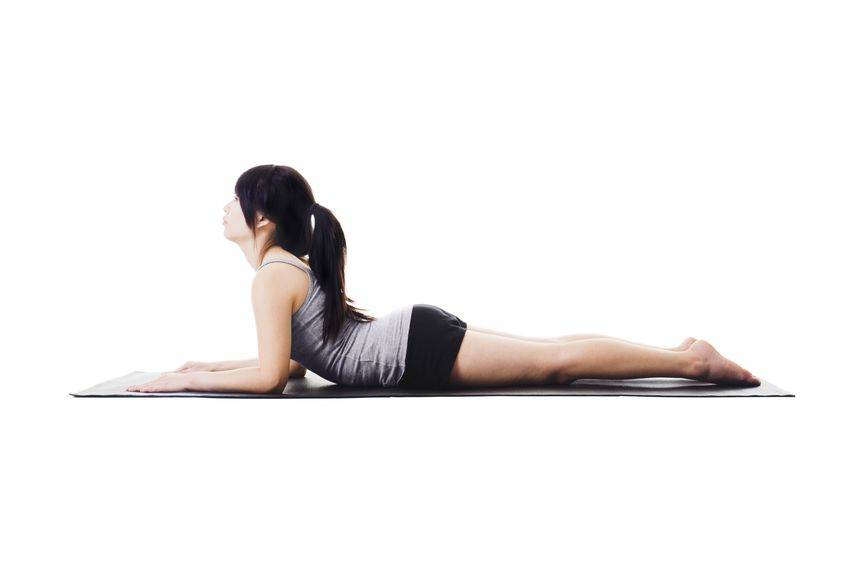
- Get into the prone position lying down on your stomach.
- Next, get on your elbows. If you have a hard time with this position go back into the prone lying position.
- Do these exercises hold each time for 1-2 seconds 6-8 times per set? This exercise can be repeated every two hours throughout the day.
Asses yourself. If the pain has decreased or the pain has moved away from the leg or thigh and into the hip or buttock, this is an improvement. Even if the pain is increased in the back but relieved in the leg this is an improvement and a green light that you should continue this exercise. You also get a green light if there is no difference at all.
- If your self-assessment gives you the green light, move on to the Cobra exercises just below.
- If your thigh or leg pain is worse, then stop right away.
- If your lower back, thighs and legs are the same you get a green light, so move on to the Cobra exercises.
#3 Cobras For Lumbar Herniated Disc
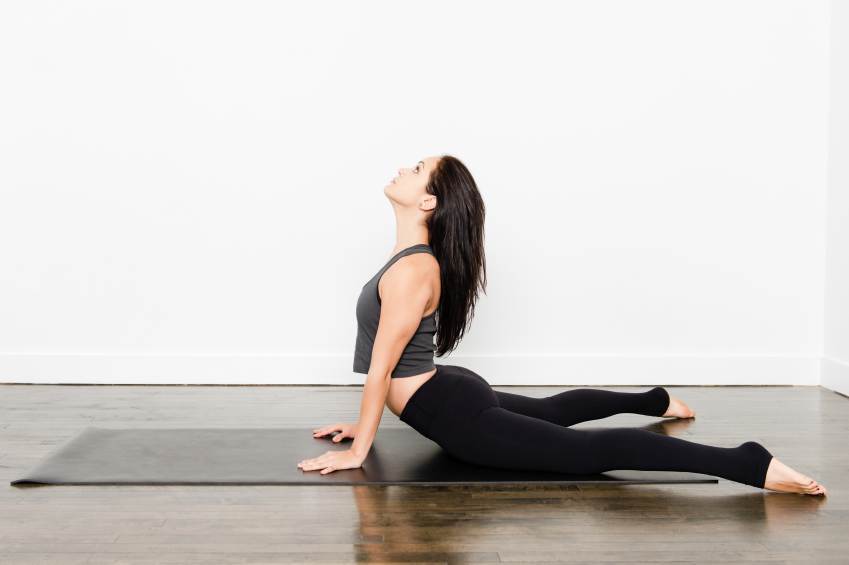
- Lie down face down with your hands underneath your shoulders.
- Push up from as high as you can until your lower back stops you or your elbows are straight.
- The pelvis should still be on the floor and the lower back muscles relaxed.
- Do these exercises hold each time for 1-2 seconds 6-8 times per set? This exercise can be repeated every two hours throughout the day.
Asses yourself. If the pain has decreased or the pain has moved away from the leg or thigh and into the hip or buttock, this is an improvement. Even if the pain is increased in the back but relieved in the leg this is an improvement and a green light that you should continue this exercise. If your thigh or leg pain is worse, then stop right away.
#4 Standing Extensions Lumbar Herniated Disc
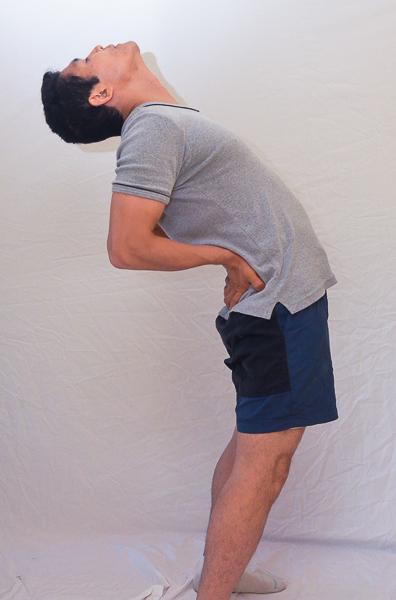
- Stand straight and put your hands behind your hips with your fingers facing down.
- Push your hands into your pelvis so that your lower back arches.
- Don’t use your lower back muscles
- These exercises can be done 6-8 times for 1-2 seconds. This exercise can be repeated every two hours throughout the day.
Stabilization Exercises: Prevent Your Disc From Coming Out By Having A Stable Spine.
#1 Cat-Camel or Cat-Camel For Herniated Disc
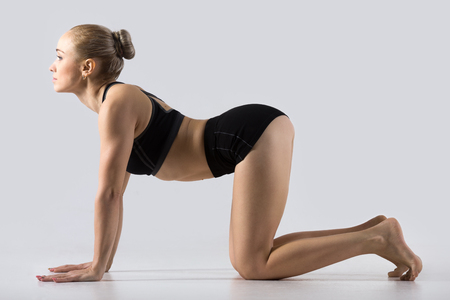
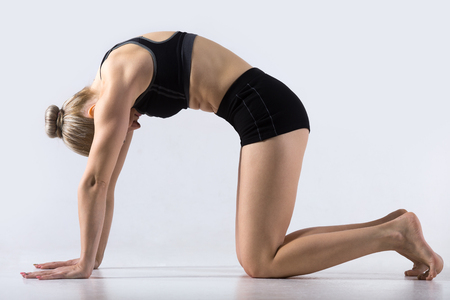
- On all fours with your knees under your hips and hands under your shoulders.
- Inhale and let your belly fall downwards toward the floor as you look up toward the ceiling for 2 seconds.
- Exhale and arch your back up as far as it will go or until you feel pain. You should not feel pain with this exercise, otherwise you are going too high.
- At the same time bend your neck forward and look toward your navel.
#2 Curl-Ups
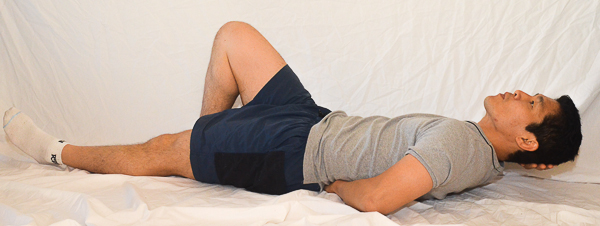
- To start, one foot is bent and the other is straight.
- One forearm goes under the arch of your lower back to support it.
- The other arm is supporting your head.
- Your head and neck come up as one block until your shoulder blades clear the floor.
- Do three sets of 5 working your way up to 10. If it’s easy, then hold for a couple of breaths.
#3 Squats
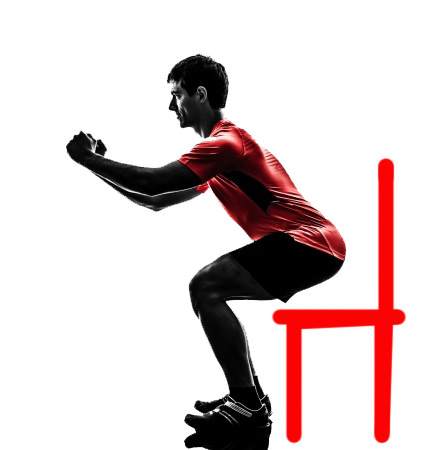
- Stand in front of a chair as if you are going to sit on it.
- Stand with your feet facing slightly more outward than your knee.
- Make sure your butt comes out, and keep lowering your butt until you touch the chair.
- Practice 3 sets of 10.
#4 Bird Dog
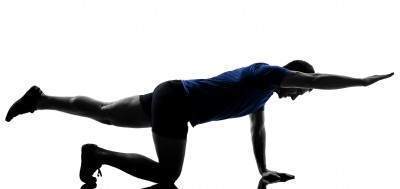
- Get into a crawling position with your hands and feet shoulder-width apart.
- Harden your core by contracting your abs and lower back. This is called bracing.
- Lift your arm first. If this is easy, then lift your leg only. If that is easy, then lift the opposite legs and arms, for example, right leg, and left arm.
- Want to make it tougher? Try lifting an arm and leg on the same side.
- 3 sets of 10. If you are shaking a little or cannot balance quite right, you’re doing the right exercise for you, i.e. lifting just the leg or arm might be easy, but lifting opposite arms and legs might put you off-balance a bit. Make sure you are stable before going to the advanced bird dog.
Tell us what you think in the comments below and like us on Facebook. This Toronto Downtown Chiropractor will answer all questions in the comments section. Let us know your vote for the best Toronto chiropractor in the comments section.
References
1. J Med Genet 2002;39:387-390 doi:10.1136/jmg.39.6.387


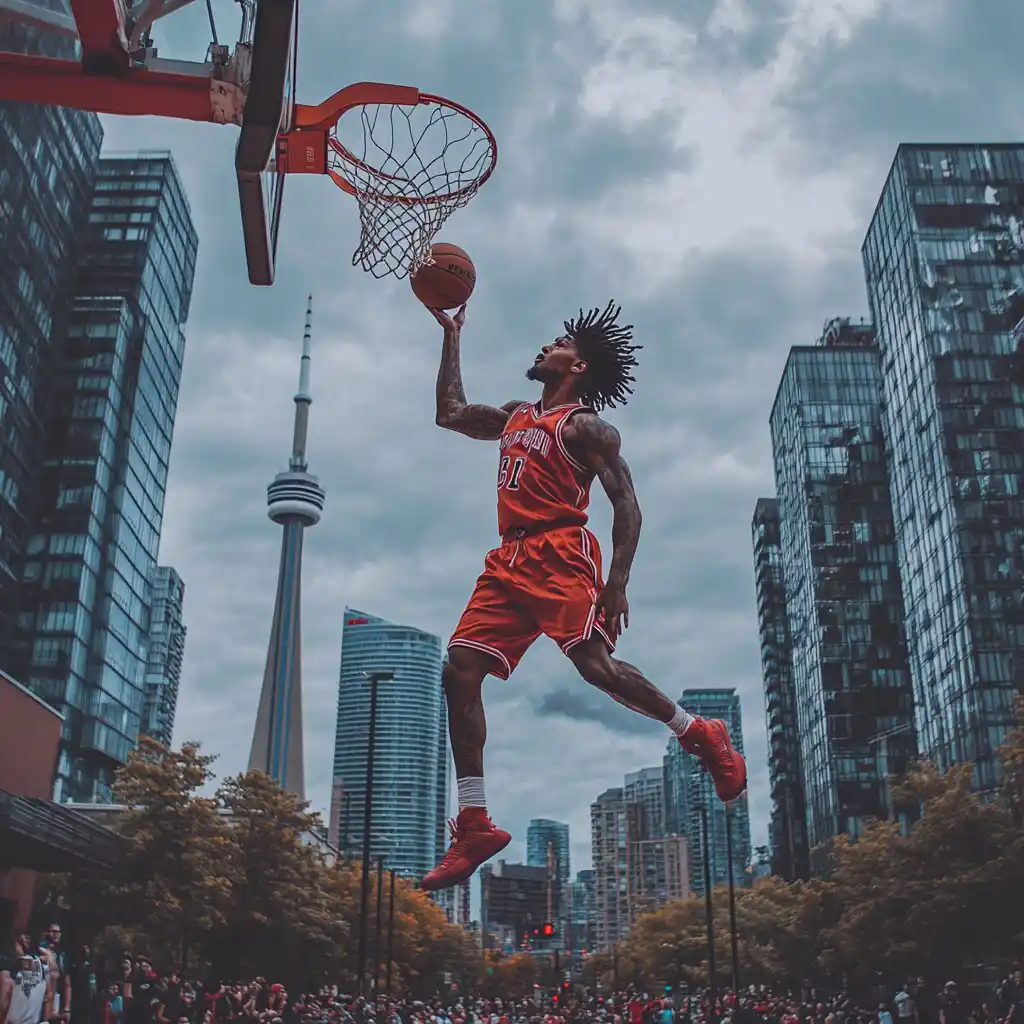

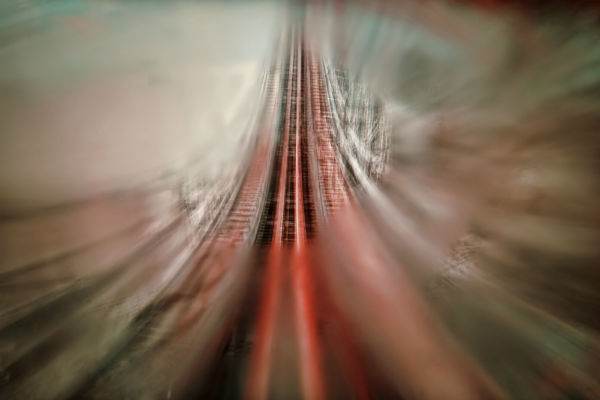
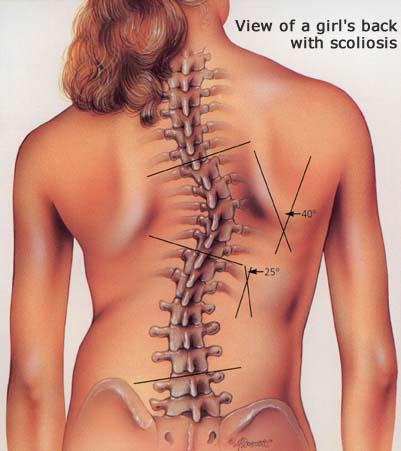
what does disc desiccation and posterocentral bulge at L4-L5 and L5-S1 level with unfolding of ligamentum flavum and facet arthropathy indenting the thecal sac without significant compression mean and what are its consequences and what can do its solving
Author
Thanks for your question Manoranjan. You are asking questions regarding your MRI or CAT scan. See the problem with just having MRI results are that they often don’t correlate to pain. Your doctor shouldn’t diagnose based only on an MRI and I cannot either. As many people have disc bulge and disc dessication with no pain. If you were to do an MRI to everyone in the USA as an example you would find millions of people with this yet they have no pain.
You will have to tell me about your symptoms for it to be any use.
Hope you understand that diagnosis are not made by MRI but by careful history and examination. Hope your doctor did those.
Hello sir my report says
mild disc bulge at l4/5 level indenting the thacal sac with mild compression of the right descending nerve and mild disc bulge at L5/S1 level intending the thecal sac with no significant compression of nerve
I play cricket and I feels pain whenever I do something of more bending
Exercises make the pain even worse
What should I do???
Author
Thanks for your question Aditya. You should tell a little bit about the pain. You and assuming that the disc is the cause of your pain. There are millions around the world with the same thing that don’t have pain.
Hope that helps our possible disc herniation.
Hi doc Ken. Hope everything’s well at you end.
Thanks for this delightful forum.
Recently I had posted my issue a month back regarding the disc protrusion and had received your solution in return.
Now a month has passed and with it the tingling feeling has vanished away. But the buttock pain still exists when I walk around. Every stride hurts my butt on both sides. The tingling feeling is negligible now but am still worried for my buttock pain. This pain is excruciating in the mornings while walking and its there since the start, the time when I was diagnosed a month back.
Few of my question are
Being out for 3-6 hours walking and standing, coming back and doing the cobra stretch hurts my calf. Basically a pinch and needle effect. This pain does not arise when am at rest..Should I stop it???
The tingling feeling to disappear is a good sign??
The buttock pain while walking is the sign of muscle weakness or sciatica???if muscle weakness can you give strengthening exercises??
What can I do more to resolve this buttock pain that is mainly while walking??
If I diligently perform my exercises what is the recovery time??
Please assist me with this Doc.Ken. Thanks
Dr. Ken- thank you for this wonderful webpage. I recently was diagnosed with T8-T9 disc herniation after astute pain while lifting luggage. I seems from my reading that herniated discs in the thoracic region are relatively rare. I was wondering if the above excercises would apply to my case? Thanks very much!
Author
Thanks for your question Fred. The exercises may help if the disc is posterior or posterior lateral and for most people below T7. Higher than that and it likely won’t help.
Hope the exercises help your thoracic disc herniation.
Hi Dr. Ken,
Very helpful website you got here. Thank you and thank God I stumbled on this. 10 years ago I have been diagnosed with 2 herniated disks on my lower back. It was a result of a sports (basketball) injury The pain then was limited to my lower back but was very painful making it extremely difficult for me stand up or walk and when I do manage to stand up it was similarly painful to get to a sitting or lying position.I had to stay in bed for almost 2 weeks. I was advised by a neuro-surgeon to undergo surgery. I tried to get a second opinion from a doctor specializing in rehab and I was convinced to skip the surgery and instead undergo therapy. to . I am now 40 years old. since that incident. After the injury I have not been active in any sport nor did I religiously do exercises for my back. To make things worse, I have a sitting job at the office. At least 5 times, I felt similar pain (although not as painful as the first time) triggered mostly by sudden movements. Right now I want to pursue a more active lifestyle and start to pursue activities that I enjoy doing. I have started to to road biking on weekends, twice a week basketball. Am also thinking about weight training. Would you be kind enough to give me some advice on how to proceed with those activities or whether or not to push through with those. Thanks in advance!
Author
Thanks for your question Marco. Great idea to start an active lifestyle again. It may not only save you from back pain but also prevent a lot of other diseases like heart problems or stroke.
Generally speaking biking is not great for disc herniations but if you are not having any pain that is fine. The problem comes when you lean too far forward in the sitting position.If you sit more upright and take breaks every hour you might be able to bike for a long period of your life.
One of the worst exercises for people that already have a disc herniation are squats and deadlifts. I would avoid them and exercises your legs in another way.
Basketball is fine. I would take it easy that’s all once you can do sudden movements and twist and turn freely and touch your toes without pain. Otherwise stick with techniques not a game.
Hope that helps your disc herniation.
At L5/S1 there is degenerative disc disease with disk space narrowing and a posterior annular tear associated with a central disk protrusion that impinges on the S1 nerve.
At L4/L5 the is a posterior annular tear associated with a broad based central/left paracentral disk protrusion and facet osteoarthritis. This is producing extramural compression that impinges on the left L5 nerve root as well as lateral recess compression of the right L5 nerve root.
I first hurt myself by getting up off the couch. At that point in could not stand and I got carted off in bed where I was laying for 3 days in a row. For the weeks that followed, I had severe ankle pain in my left leg and I was not able to out any weight on the leg. Standing hurt a lot and laying down on a hard surface alleviated the pain to the point where it was tolerable. I could not tolerate sitting down either and it caused the same debilitating pain in the ankle. 6-8 weeks from the incident, I retuned to work because I was able to tolerate sitting down with some acceptable level of pain. I could barely walk 30;seconds before the pain was no longer tolerable in my ankle.
Today, 14 weeks from the incident I am able to wake up and do nit feel much pain, but as the day progresses, the pain levels are higher and higher. I can only walk about 3 minutes at a slow pace before the pain becomes unbearable. At that point I have to sit down to feel better. The MRI results noted above were obtained at 12 weeks since the incident. My left foot is numb and the pain is in my outer left ankle and back of left calf. I don’t have much discomfort in the lower back area. I would say 10% of pain in lower back and 80% in ankle and calf and 10% in left butt There is no pain on the right side. I can not arch my toes back as far on my left foot as compared to the right foot. Sitting down is tolerable with some mild discomfort. Driving is OK, but at the 40 minute mark, I start feeling more pain in the left ankle and foot.
I take Tylenol 3 once in a while and naproxen twice a day.
My main complaint at this point is that I cannon walk without discomfort and cannot walk for more than 3 minutes before I have to sit or lay down because of pain in the outer ankle, back of calf and left butt.
Doing the cobra stance does not hurt, but the bird dog causes some pain in the left butt.
Any insights you have or advice would be appreciated.
Thank you.
Author
Thanks for your question Branson. I would say that in real life you have a disc extrusion which is unfortunately worse. While the MRI says protrusion MRI’s aren’t very smart. It only takes the image. Unless you had your MRI sitting or standing it doesn’t give you the full picture due to gravity. You said it yourself you can’t walk or sit very long. When you sit or stand or walk you increase the pressure on the disc so it sticks out more. So if it sticks out more there is more pressure on the disc thus more pain or numbness etc.
The fact that you have more leg pain vs back pain and if I’m not mistaken your pain is constant. This means there is quite a lot of pressure on your nerve. Also you shouldn’t blame yourself as genetics probably had a big factor.
I personally would not do cobra without having your problem properly assessed by a health care practitioner.
Hope that helps your disc protrusion / extrusion.
Hi thanks for your kind reply. Symptoms are like mild pain un my lower back. I cant sit cross leg for long time. I feel tingling sensation in my leg if i sit crossleg for long time. These are the symptoms
Author
Thanks for your further comment. I would try the exercises in this article. If the symptoms like numbness, tingling or pain go further down the leg than you should stop the exercises. Also if any of those symptoms become worse. You are getting better if the back pain increases but the leg pan decreases.
Hope that helps your possible disc herniation.
Author
Thanks for your question Likith. I would try the exercises here in this article. If the pain gets worse or you get symptoms like tingling, numbness or pain going further down the leg than you are getting worse so you then you would need to stop the exercises. These exercise need to be supervised by a health professional at least at the beginning.
Hope that helps your possible disc herniation.
Hello 🙂
I have recently got my results back from an MRI . At L4-L5 there is a large right paracentral disc herniation which is compressing the right L5 nerve root. No neuroforaminal stenosis.
I am a resident in Toronto. I am looking to have this problem solved once and for all. I have even having dibilitating pains down my right side for almost 7 months. Pins and needles in the foot that works its way to my calf. Spasms which are continuous . Pains into my ankle. Numb toes. Sciatic symptoms.
Any advice for me?
Sincerely
Michelle
Author
THanks for your question Michelle. You can try the exercises here in this article. Make sure they are supervised by a health care practitioner.
Hope that helps your probable disc herniation.
Hi,
I have back problem.below are my MRI impressions
1. Loss of normal lumbar lordosis (muscle spasm)noted.
2. Disc degeneration decreases in disc height with mild opposing template degenerative changes seen at L5-S1 level.
3. Mild disc bulge at L4-5 level indicating the anterior thecal sac with mild lateral recess narrowing.
4. Broad based posterocentral protrusion with left paracentral inferior migration at L5-S1 level causing spinal canal narrowing with severe compression of left traversing nerve root.
I am undergoing physiotherapy as of now. Kindly advise whether exercise above mentioned will reduce my pain.
Author
Thanks for your question. You need to tell me your symptoms not just your MRI results which are misleading by themselves.
Hi Doctor Ken,
My name is Ram Prakash Dubey and I am suffering from slip disc problem from last 3 years. My doctor advised for a MRI and the report is as under written:
” Impression:- P.I.V.D. at L3-4, L4-5 & L5-S1 level with Nerve Roots Compression and Lumbar Spondylosis as described ”
Now a days, I am regularly doing spinal extension exercises. In my right leg, I feel a very high shocking sensation from toe to knee and as soon as I bend my upper back like a bow, the sensation releases or vanished and I feel relax.
Kindly advise or suggest something that helps,
With Warm Regards,
Ram Prakash Dubey
Author
Thanks for your question Ram. You are making yourself worse if you feel pain that goes from your toes up. Stop the exercises and visit a chiropractor or physiotherapist.
Hope that helps your pain.
I have been diagnosed with ruptured disc L1 vertebra and the doctors are suggesting surgery. I tried the first exercise where you just lie down and I had pain that went down my leg and stopped just above my knees. Is there any other kind of exercises that I can do? trying to avoid surgery if at all possible Article is very good
Dr. Ken,
I have djd at L4 and L5. Extrusion that markedly compresses the thecal sac and the L5 nerve roots. As well as L5-S1 lateral disc protrusion on the right that encroaches on the right lateral recess and the caudal aspect of the right L5-S1 neural foramen. My pain is primarily on the left side and I have gotten 3 epidural injections (1 transforaminal) without much sucess. I do the Mckenzie stretches and still continue to suffer with back pain.
Author
Thanks for your comment Danny. Sometimes you need professional help. Also you may not be doing the exercises properly. For example with the cobra you are trying to go further each time and you should try breathing out and sagging the lower back. Provided the pain doesn’t increase or go further down into the leg. Numbness tingling or pain going further down the leg is another reason to stop.
Hope that helps your disc extrusion.
Hello Doctor
I m Deepu , 23 year old.
i am feeling more pain in my left leg and back from last 2 years.
when i shit countiniously 30 minut above then worse pain and upper back pain also
i did exercise from last 3 month, but there is no improvment in lower back pain.
MRI report shown bellow
“Primary bony lumber canal stenosis with postericentral disc extrusions at L3-L4 and L4-L5 level causing thecal sac effacement and compression over traversing nerve roots.
Type 2a(left) lumbosacral transition vertebra.”
Many Doctor suggest for surgery.
Thank You
Author
Thanks for your question Deepu. You should try conservative care first for 6 months with several different practitioners as surgery is permanent.
Hope that helps your disc herniation.
Dr Ken,
I have back pain and lt leg pain for the last two yreas.MRI taken on 12/2013 showed Diffuse disc bulge with centraldisc herniation at l5-S1level extruding down to upperS1 level causing moderatecompression on thecal sacand without significant root compression.
Mild annular disc bulge at L4 -5 levelwith mildcompression on thecal sacand without nerve root or cord compression.
For the last two months the pain aggravated and I am ffeeling pain almost the whole day.
Kindly advise what to do.
Author
Thanks for your question Kala. Unfortunately the exercises will most likely aggravate you. You can do prone lying down and the Sphinx but they may still aggravate you. It is best if you find a competent chiropractor or physiotherapist. You should get more out of that kind of treatment.
Hope that helps your disc herniation.
Dear Dr Ken,
last seven months I have left flank pain and sometime mid back pain. After several examinations (US, x-ray,…), finaly I was on MRI and it was determine disc herniation on left side of Th8/Th9 wich press root of Th9 nerv. I start on some physical therapy and some therapist do not allow exercise and others strongy suggest. Back muscles is often in spasm and I feel that some of exercise can be useful for me. My job is related to desk work, plus I am frequently on plain. I kindly ask on advice about exercises.
Thank you in advance,
Milan
Author
Thanks for your question Milan. First it is not normal to get flank or side pain with a disc herniation. I suggest that you get this further examined. 60% of 60 years with no pain have disc herniations. Just because they found a disc herniation doesn’t mean that is what is causing your pain. It doesn’t sound your history and the MRI are correlated.
You sound like you’ve been diagnosed by MRI and not by a thorough examination. I could be wrong as I am only going by what you have written and not a in-person history and examination.
I recommend a second opinion.
Hi Dr Ken,
I am 30 Years old and have backache for 2 years now. It started in Nov’13, for 3 months I had severe backache. Stiffness in the lower back. Got some homeopathy treatment and started doing exercises. I can do daily routine tasks but every now and then have the backache daily, cant lift even 3-4 Kg of weight. I do few exercises daily but still experiencing pain. I want complete relief from the backache. Please suggest.
Btunhp9@71
At L3-4 diffuse bulging and posterior protrusion of disc is seen with hypertrophied facet joints causing mild indentation of thecal sac and lateral recesses.
At L4-5 diffuse circumferential bulging and posterior extrusion of disc is seen with hypertrophied facet joints causing mild degree of central spinal canal and stenosis with moderate right and moderate-severe left lateral recess stenosis.
At L5-S1 diffuse circumferential bulging and posterior protrusion of disc is seen with hypertrophied facet joints causing mild indentation of epidural fat and lateral recesses.
The lower end of the spinal cord and conus medullaris are normal.
No intra spinal mass or pre/para vertebral collection seen.
Please let me know if this is curable and whether I will be able to live a healthy life again.
Author
Thanks for your question Abhinmanyu. Try the exercises in this article first. These exercises can make you worse so must be supervised by a health professional. If the pain goes further down the leg or you get any other symptom further down the leg than you should stop.
Hope that helps your disc herniation.
Thank you for your reply. I have read a few articles on the inversion therapy and it says that It helps in recovering the herniated disc problem. I have been doing inversion with my inversion table for a few days now. Should I keep doing it?
And how about Pushups and a Light Jog Doctor? Is it okay to do pushups, and a Light Jog? I have always been in good shape, went to the gym regularly and took care of my fitness but then I got injured and I haven’t done any fitness activities since then. I would really want to do some exercises that don’t worsen my situation. For now, are pushups and a light jog + Inversion okay?
Author
Thanks for your question Zia. THe inversion table if it hasn’t aggravated you is fine. Just keep it to a couple minutes at a time. Leave it too long and you will regret it. I would recommend the articles in this article as push-ups can aggravate you. Also the best exercise are swimming and aquafit. I wouldn’t recommend jogging at this early stage.
Hope that helps your herniated disc.
Hello Dr Ken,
I twisted my back about 6 weeks ago and got severe pain in the lower back and right hip. I took rest for a few weeks and it got better, but then I drove for like 5 hours straight and it all came back, worse than ever. I got an MRI done and was referred to a spinal surgeon. The surgeon said that I have herniated/ruptured (possibly sequestered) L5S1 disc and the fragment is pinching on the nerve which is causing this pain. He suggested that I can go on with it till it heals naturally, maybe in a few years, or I can go for surgery. I didn’t want to opt for surgery at this early stage and wanted to try the more conventional methods. I have been doing these stretches, the cobra, the lying on my belly and lifting my legs alternately and inversion table, but I still have pain. I have pain when I sleep, or when I sit for too long. I have noticed that my range of motion in the legs and the thighs has got better and are less painful that before, but my right hip still hurts so bad. When I do your suggested stretches, they don’t hurt me much in the leg and the thigh, but my butt and lower back hurts for hours. I am also taking neuropathic (Pregabalin) tablets. I would greatly appreciate if you would suggest me the next course of action from here. Should I continue doing these light stretches and cope with the pain or should I go for epidural shots or a surgery. Sorry for the very long comment but I would be greatly indebted to you for your advice and suggestion.
Thankyou
Regards.
Zia
Author
Thanks for your question Zia. You won’t get better with exercises alone. Go for the shots first then see how you do. I would stop with the exercises for now. I would only do Sphinx and lying face down if they don’t make you worse in any way like giving you more pain or sending numbness, tingling or pain further down the leg. It will be minimum 6 months before you start feeling better.
These exercises should be supervised by a health professional.
Hope that helps your disc sequestration.
Hi Dr.ken,
I workout daily.last week suddenly while doing stretching I got back pain and it was very intense pain. I visit to doctor and he inject me and prescribed with some medicine. But still now I have pain while sitting, bending running for all movement I am faving pain. Please suggest fir what reason thus pain is for. I am very worried.
Thank you for your anticipation.
Author
Thanks for your question Gunesh. Why don’t you try the exercises in this article. You need to start slow and likely only do the sphinx position at first. Then when you can hold that for longer periods do a partial cobra and gradually come up further after a day or two. Really though you should have these two exercises supervised by a health professional. If the the pain, numbness or tingling starts going further down into your buttock or leg than you are getting worse. This means you need to stop the exercises.
Hope that helps your back pain from a possibly herniated disc.
Dear Dr.Ken, I had a discectomy surgery 6 weeks ago after caring L4 – L512mm extrusion several months. What type of exercise would you recommend for after surgery recovery? Thank you,
Grayr
Author
Thanks for your question. First you should be walking as soon as you can usually the first week. You should start to do gentle exercises by week 2 which we won’t go over as you are week 6. You should do these exercises https://www.bodiempowerment.com/part-2-degenerative-disc-disease-exercises-help-lower-back-pain-spondylosis/
As with any exercise they can make you worse, although not very likely. These excercises should be supervised by a health professsional.
Hope that helps your disc herniation.
Thank you very much Dr Ken!
Best regards,
Grayr
Author
You are welcome Grayr.